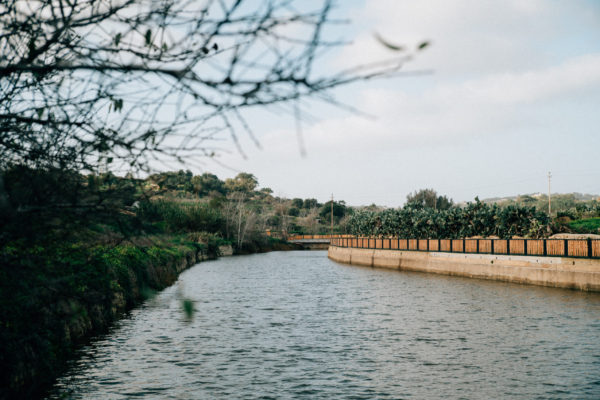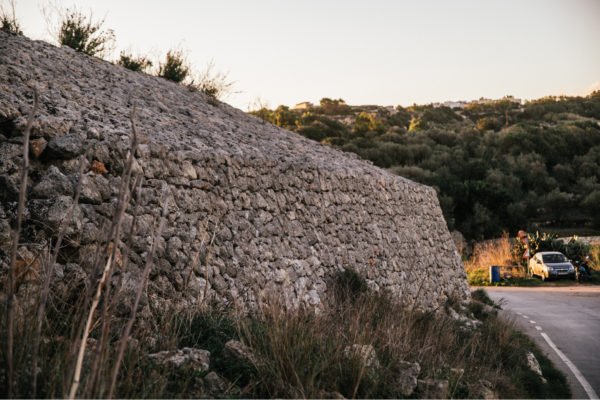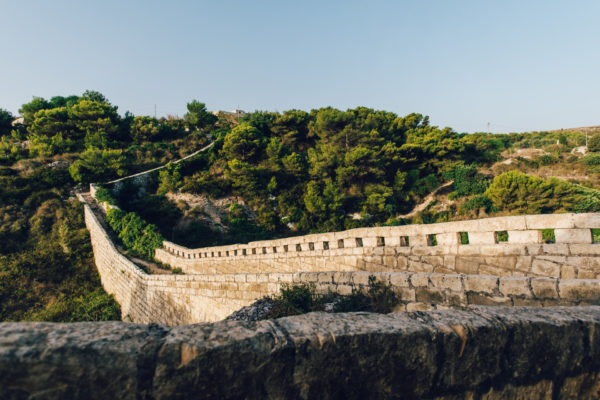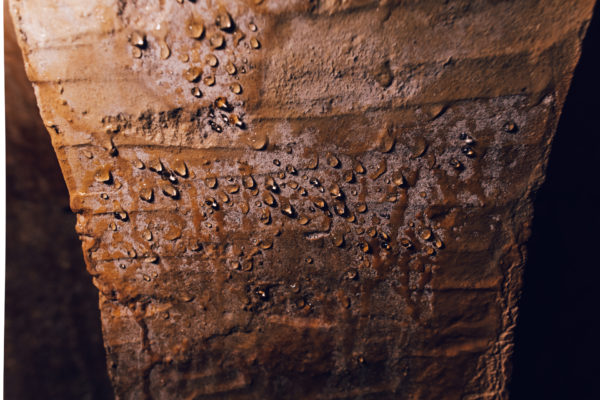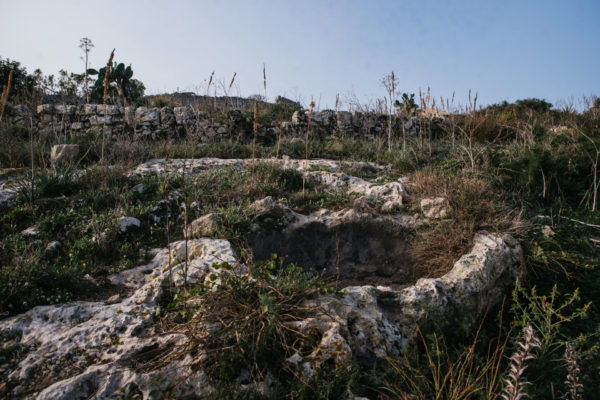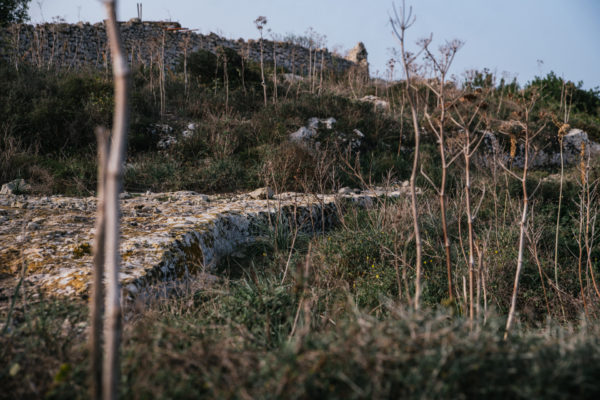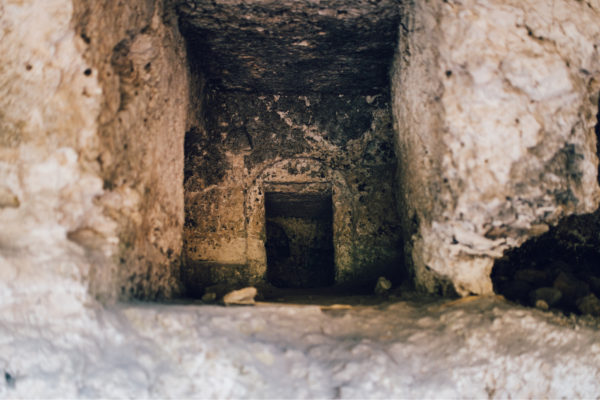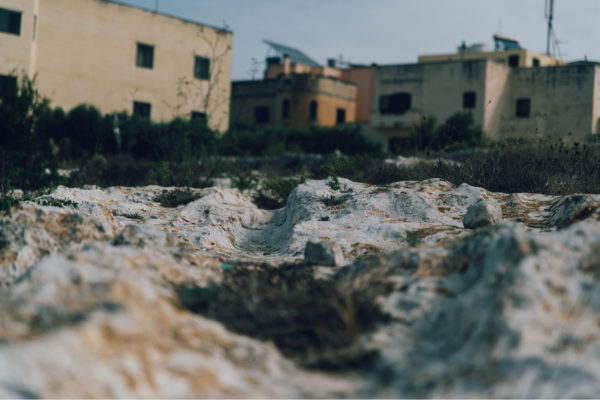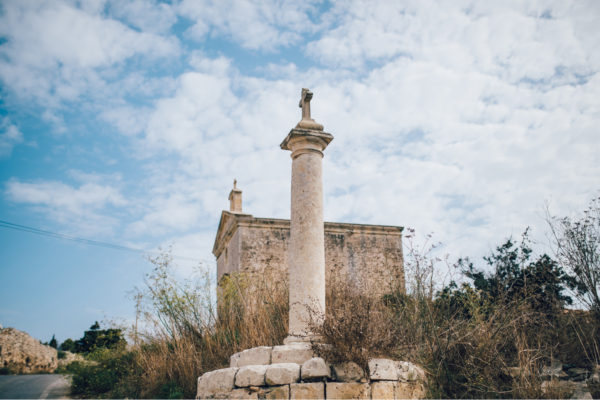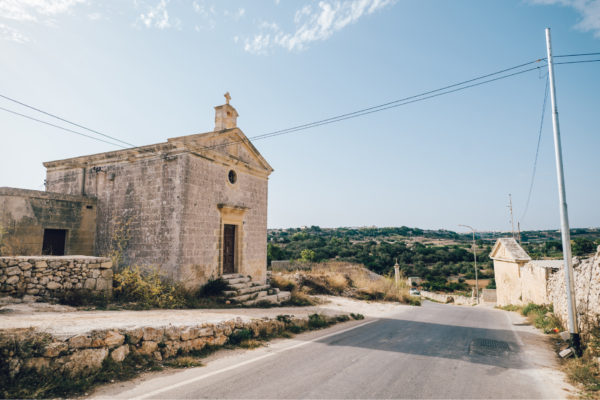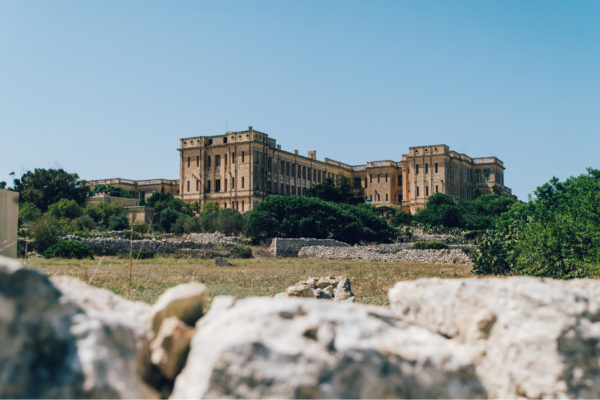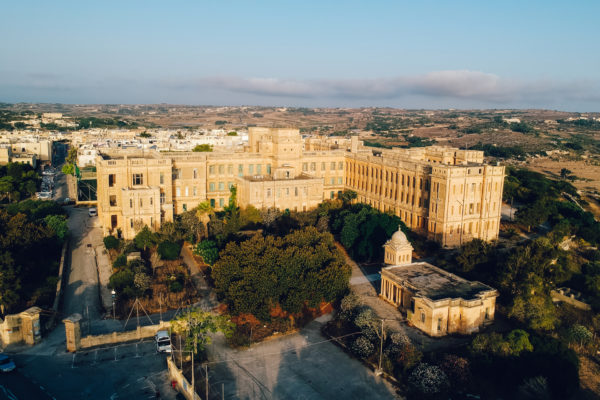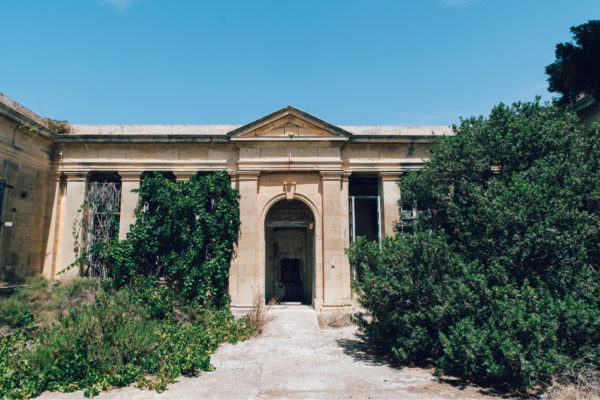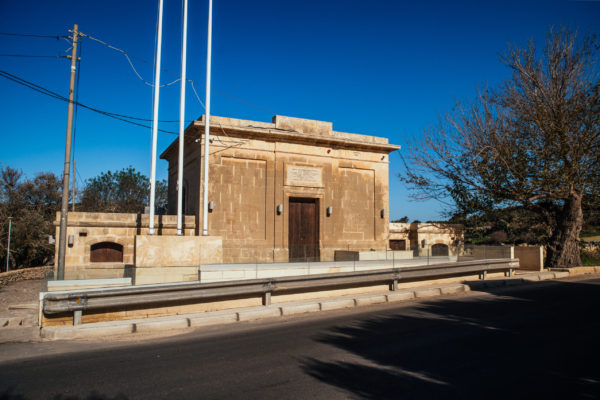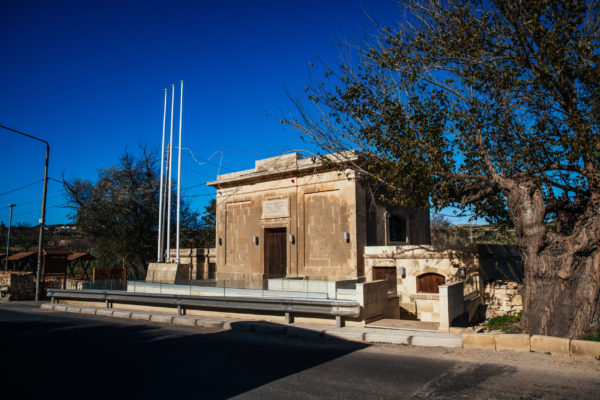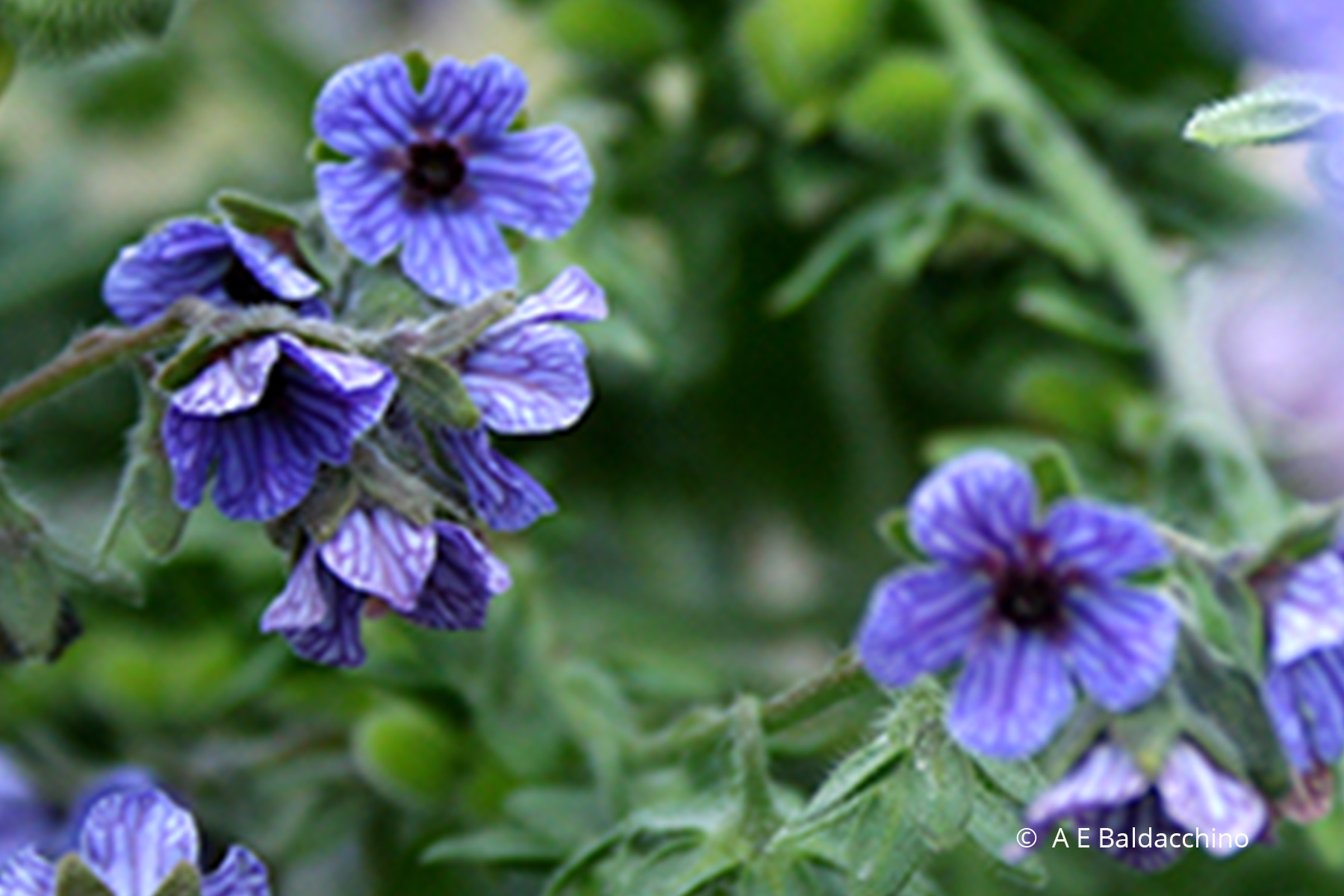
The Blue hound’s tongue is a biennial herb native to the Maltese Islands and to a wider Mediterranean region. It grows to 60 cm in height displaying green stems densely covered with fine hair. This adaptation helps the plant to deter herbivores from feeding on it.
The oblong to elongated leaves are 20 cm long and 2.5 to 3.5 cm wide. These too are covered with hair on both the upper and lower surfaces of the leaf which have rounded tips. The lower leaves grow in a circular arrangement borne on short stalks, while the upper leaves grow alternately clasping the stem, smaller in size towards the top of the plant.
The flowers are arranged in elongated clusters, each flower containing 5 green sepals, 6 to 8 mm long with 5 petals 10 to 11 mm long. The Blue hound’s tongue is notable for its very attractive flowers with deep blue to lilac petals having darker blue veins running across them.
Flowers are borne on short stalks arranged along a coiled stem which elongates outwards as the flower cluster matures and opens. Each flower produces 4 egg-shaped ‘nutlets’ 6 to 8 mm long. These store the seeds until these mature and then the nutlets split open.
Seed dispersal can also be made by animals or humans with the help of hooks the seeds have which become attached to unsuspecting passersby. Seeds are transported over a significantly larger area allowing the Blue hound’s tongue to increase its regional distribution.
As a result the Blue hound’s tongue can be found growing in a variety of habitat types. These include, but are not limited to, open woodlands, dry areas, valleys, open grasslands, disturbed areas and wasteland.









